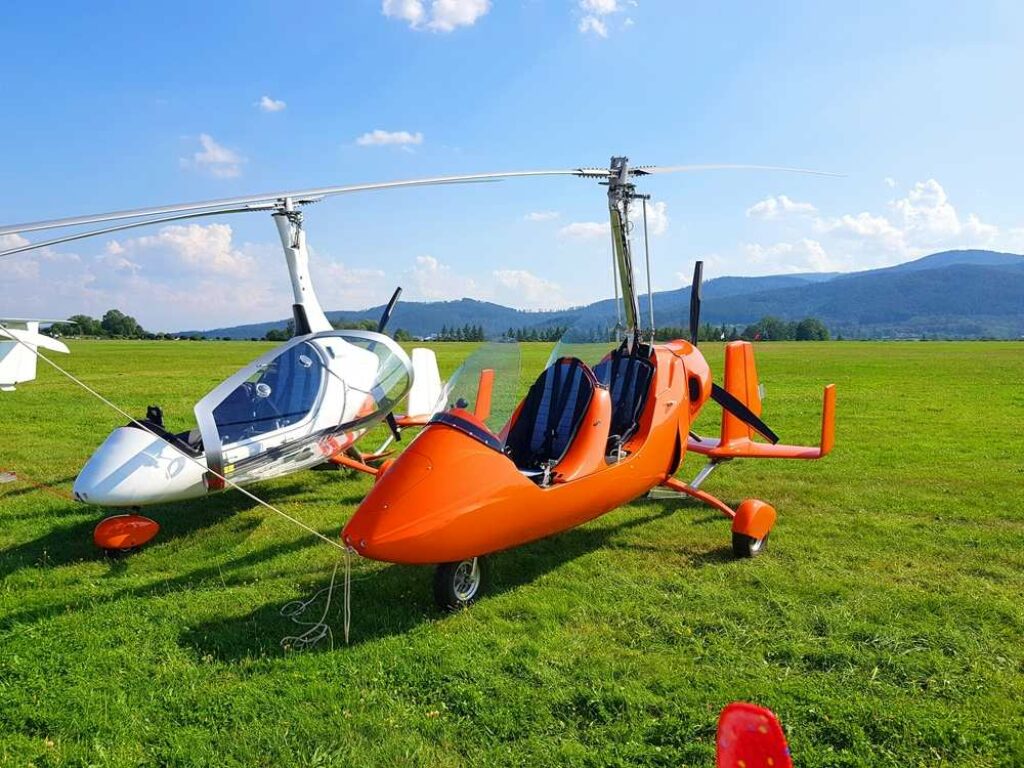
Ultralight Aircraft
Have you ever wished that you could fly in the sky and be as free as a bird? But, the cost and difficulty of becoming a licensed pilot are holding you down? Well, maybe the world of ultralight aircraft can let your dreams take off.
Related Topics (Sponsored Ads):
In the dynamic world of aviation, the term “Ultralight Aircraft” evokes a sense of freedom, adventure, and the pure joy of flight. These lightweight, single-seat aircraft have carved out a unique niche in the United States, offering a captivating alternative to traditional general aviation. Defined by the Federal Aviation Administration (FAA) under Part 103, Ultralight Aircraft are a distinct category of aircraft that prioritize simplicity, affordability, and the thrill of unencumbered flight.

Overview
The origins of Ultralight Aircraft can be traced back to the early 20th century, when pioneering aviators and engineers began experimenting with minimalist designs and lightweight materials. Over the decades, this pursuit of innovation has led to the development of a diverse range of Ultralight Aircraft, each with its own unique characteristics and capabilities. Today, these aircraft continue to capture the imagination of aviation enthusiasts, providing a gateway to the skies for those seeking an exhilarating and accessible flying experience.
Ultralight Aircraft in the United States come in a variety of forms, each tailored to specific needs and preferences. The most common types are listed below.
Fixed-Wing Ultralight
These aircraft resemble traditional airplanes but with a simplified control system and often an open cockpit. Known for their stability and ease of handling, fixed-wing Ultralights are a popular choice for recreational flying and aerial photography.
Flex-Wing Ultralights (Trikes)
Consisting of a delta-shaped wing and a motorized tricycle-like undercarriage, Trikes offer a unique and thrilling flying experience. Their agility and maneuverability make them well-suited for adventurous pilots seeking an adrenaline-fueled ride.
Powered Paragliders (PPG)
Powered paragliders combine a lightweight engine with a paragliding wing, allowing pilots to take to the skies with a backpack-like motor. This type of Ultralight Aircraft is renowned for its simplicity and the sense of freedom it provides.
Gyrocopters
Gyrocopters feature a rotor similar to a helicopter, but they rely on an unpowered overhead rotor and a conventional engine for propulsion. These aircraft offer a distinctive flying experience and are often used for recreational purposes.
Multicopters/VTOL
Multicopters, or Vertical Take-Off and Landing (VTOL) Ultralight Aircraft, utilize multiple downward-thrusting motors and propellers to achieve flight. These innovative designs are gaining popularity for their versatility and the unique perspectives they offer.
Factors to Consider When Choosing an Ultralight Aircraft
Each type of Ultralight Aircraft has its own advantages and disadvantages, catering to the diverse preferences and needs of pilots. Factors such as performance, safety features, cost, and ease of use should be carefully considered when choosing the right Ultralight Aircraft for your flying aspirations.
Selecting an Appropriate Ultralight Aircraft: It is crucial that it should match both for your needs and skill level.
Performance: Evaluate the aircraft’s speed, range, and payload capacity to ensure it meets your intended use, whether it’s for recreational flying, aerial photography, or transportation.
Safety Features: Look for Ultralight Aircraft with robust safety systems, such as parachutes, emergency landing gear, and advanced avionics, to enhance your overall flying experience and mitigate risks.
Cost: Ultralight Aircraft are generally more affordable than traditional general aviation aircraft, but the purchase price, operating costs, and maintenance requirements can still vary significantly. Establish a realistic budget and consider the long-term financial implications.
Ease of Use: Consider the complexity of the aircraft’s controls and systems, as well as the required level of piloting skill. Opt for an Ultralight that aligns with your experience and comfort level, ensuring a smooth and enjoyable learning curve.
Maintenance and Reliability: Assess the aircraft’s maintenance requirements, availability of spare parts, and overall reliability to ensure you can keep your Ultralight in top condition and minimize downtime.
Regulatory Compliance: Familiarize yourself with the FAA’s Part 103 regulations governing Ultralight Aircraft operations, as well as any state or local rules that may apply in your area.
By carefully evaluating these factors, you can make an informed decision and select an Ultralight Aircraft that best suits your flying goals, skill level, and budget.
Ultralight Aircraft Regulations in the United States
In the United States, the operation of Ultralight Aircraft is governed by the FAA’s Part 103 regulations. These rules are designed to ensure the safe and responsible use of these lightweight aircraft, while also maintaining the accessibility and freedom that Ultralight Aviation offers.
Under Part 103, Ultralight Aircraft are not considered “aircraft” in the traditional sense and are therefore subject to a different set of requirements. Pilots of Ultralight Aircraft are not required to hold a pilot’s license or undergo extensive training, making the sport more accessible to a wider audience. However, the FAA strongly recommends that all Ultralight pilots seek instruction from certified flight instructors to ensure they develop the necessary skills and knowledge for safe operation.
The regulations impose limitations on the weight, speed, and passenger capacity of what is legally considered to be an Ultralight Aircraft. In the United States, these aircraft must weigh less than 254 pounds (115 kilograms) empty, have a maximum airspeed of 55 knots (63 mph or 102 km/h), and be limited to a single occupant. Additionally, Ultralight Aircraft are restricted to daytime operations, visual flight rules, and must avoid congested areas and controlled airspace without prior authorization.
While the regulatory framework may seem restrictive, these guidelines are in place to promote the safe and responsible use of Ultralight Aircraft, ensuring that pilots and the general public can enjoy the thrill of flight without compromising safety.




